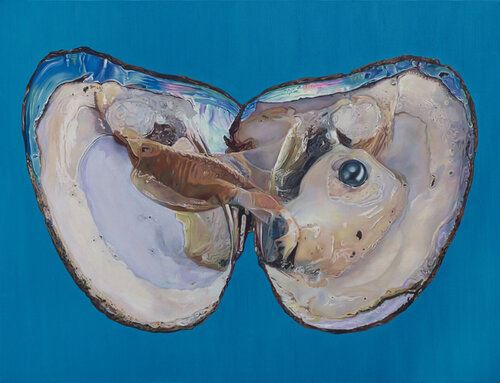From Keith Haring To The Screen Generation
The 20th century is defined by the creation of mass culture, and its ability to share ideas that affect political, cultural, and social changes via television, and later, the Internet. The creation of such mass-generated ideologies allowed for the development of a counter-culture as young individuals look for more and more radical ways to express themselves and technology becomes a larger part of our lives.
Born on the streets of Downtown New York in the вҖҳ80s, with personalities like Keith Haring using the city as their canvas, street art became the medium of rebellion and counter-culture. The aesthetic of contemporary street artists still draws from their predecessors, but now these works have found recognition in both the primary and secondary markets.
While street art has found its way into institutional collections, the cultural revolution brought by the introduction of NFTs in early 2021 is just picking up speed. Digital art is nothing new; artists began experimenting with expression in the virtual realm in вҖҷ90s, but the increased accessibility to the Internet has created an environment for digital art to become mainstream.
Digital creators and their newly built virtual infrastructure challenge the traditional art world's idea of вҖңwhat art is." NFTs have disrupted the physical art world in favor of a completely digital one, triggered conversations around issues of ownership and artistsвҖҷ royalties attached to NFTs, and allow us to imagine the future of digital museums and what that might entail.
Featuring Keith Haring, Richard Prince, Pieter Schoolwerth, Fawn Rogers, Pearlyn Lii, and Elise Swopes, вҖңKeith Haring to the Screen GenerationвҖқ doesnвҖҷt give a definitive answer to any of those questions but aims to provoke a dialogue about the coexistence of digital and physical art. HaringвҖҷs subway drawings set the scene for untraditional art forms to become mainstream while RogerвҖҷs paintings challenge our idea of the relation between nature and technological media. LiiвҖҷs work questions the boundaries between real life and digital personalities and artwork by Prince observes the boundary between reality and social media by appropriating content from platforms such as Instagram. Swopes use the Internet in her multimedia work to comment on its influence on the way we traverse the world. SchoolwerthвҖҷs paintings merge the past and the present to play with the split between virtual and material space.

Recommended for you
The 20th century is defined by the creation of mass culture, and its ability to share ideas that affect political, cultural, and social changes via television, and later, the Internet. The creation of such mass-generated ideologies allowed for the development of a counter-culture as young individuals look for more and more radical ways to express themselves and technology becomes a larger part of our lives.
Born on the streets of Downtown New York in the вҖҳ80s, with personalities like Keith Haring using the city as their canvas, street art became the medium of rebellion and counter-culture. The aesthetic of contemporary street artists still draws from their predecessors, but now these works have found recognition in both the primary and secondary markets.
While street art has found its way into institutional collections, the cultural revolution brought by the introduction of NFTs in early 2021 is just picking up speed. Digital art is nothing new; artists began experimenting with expression in the virtual realm in вҖҷ90s, but the increased accessibility to the Internet has created an environment for digital art to become mainstream.
Digital creators and their newly built virtual infrastructure challenge the traditional art world's idea of вҖңwhat art is." NFTs have disrupted the physical art world in favor of a completely digital one, triggered conversations around issues of ownership and artistsвҖҷ royalties attached to NFTs, and allow us to imagine the future of digital museums and what that might entail.
Featuring Keith Haring, Richard Prince, Pieter Schoolwerth, Fawn Rogers, Pearlyn Lii, and Elise Swopes, вҖңKeith Haring to the Screen GenerationвҖқ doesnвҖҷt give a definitive answer to any of those questions but aims to provoke a dialogue about the coexistence of digital and physical art. HaringвҖҷs subway drawings set the scene for untraditional art forms to become mainstream while RogerвҖҷs paintings challenge our idea of the relation between nature and technological media. LiiвҖҷs work questions the boundaries between real life and digital personalities and artwork by Prince observes the boundary between reality and social media by appropriating content from platforms such as Instagram. Swopes use the Internet in her multimedia work to comment on its influence on the way we traverse the world. SchoolwerthвҖҷs paintings merge the past and the present to play with the split between virtual and material space.

 ARTISTS
ARTISTS













